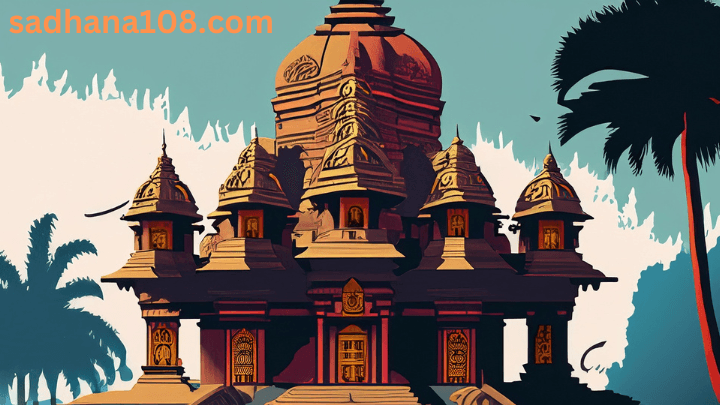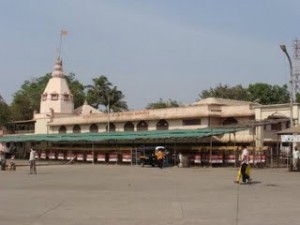Siddhivinayak Mahaganapati Temple


The Siddhivinayak Mahaganapati Temple is a Hindu temple located in Titwala, a small town in the Kalyan taluka of Thane district – near Mumbai, Maharashtra, India. The temple is dedicated to the Hindu, elephant-headed god of wisdom Ganesha. Titwala is believed to be the putative site of the hermitage of sage Kanva, foster parent of Shakuntala who was born here. The Siddhivinayak Mahaganapati Temple is steeped in ancient legend and the temple is frequented by a very large number of devotees on account of the belief that separated married couples could be united and marriages of desired people could be fixed easily if the Ganesha image installed in the temple is worshipped with devotion.
According to legend, this village was part of Dandakaranya forest where the Katkari tribe lived (the tribal hamlets are located even now close to the town across the Kalu river, approached only by boats). Sage Kanva had his hermitage here. Kanva was the author of several hymns of the scripture Rigveda and one of the Angirasas. He had adopted Shakuntala, who was abandoned immediately after her birth by her parents, sage Vishwamitra and the celestial damsel Menaka. Shakuntala’s story has been narrated in the Hindu epic Mahabharata and dramatised by Kālidāsa, considered the greatest poet and dramatist in Sanskrit language, in his play called the Abhijñānaśākuntalam (“The Recognition of Shakuntala").
King Dushyanta of Gandhara Kingdom while on a battle campaign was passing through the forests when he and Shakuntala fell in love with each other and got married according to the Gandharva rite (exchanging garlands as a marriage vow) in the hermitage. Since Dushyanta had to leave Shakuntala after some time due to unrest in his capital city, he gave Shakuntala a royal signet (a ring) as a sign of their love, promising her that he would return for her.
Once, while Shakuntala was in the hermitage in a pensive dreaming mood thinking about her husband Dushyanta, she did not pay the desired reverential attention to sage Durvasa who was visiting the place. Durvasa, known for his short temper, felt offended by this slight, cursed Shakuntala saying that the person she was dreaming of would forget about her altogether. However later, Durvasa toned down his curse to mean that the person who had forgotten Shakuntala would remember everything again if she showed him a personal token that had been given to her. As per the curse, Dushyanta refused to recognise her.
According to local legend, sage Kanva, realising the gravity of the issue faced by his adopted daughter Shakuntala, directed her to build a shrine in honour of god Ganesha as Siddhi Vinayaka. He assured her that by her sincere prayers Siddhi Vinayaka would bless her and she would once again join her husband Dushyanta. This eventually came true after considerable effort and lapse of time and by which time Shakuntala who had conceived after marrying Dushyanta, also gave birth to a son who came to be known as Bharata according to Mahabharata epic. Pandavas and Kauravas were descendants of Bharata.
The Siddhivinayak Mahaganapati Temple built by Shakuntala with the stated legendary background was submerged under a tank. During the rule of the Peshwa Madhavrao I, to resolve the drought situation in the town, the tank was de-silted to provide drinking water to the town. It was during the de-silting operations that the temple was found buried. The image of god Ganesha was found by Peshwa sardar Ramchandra Mehendale buried in the silt. Soon thereafter, the renovation of the temple was undertaken and a stone temple was built.